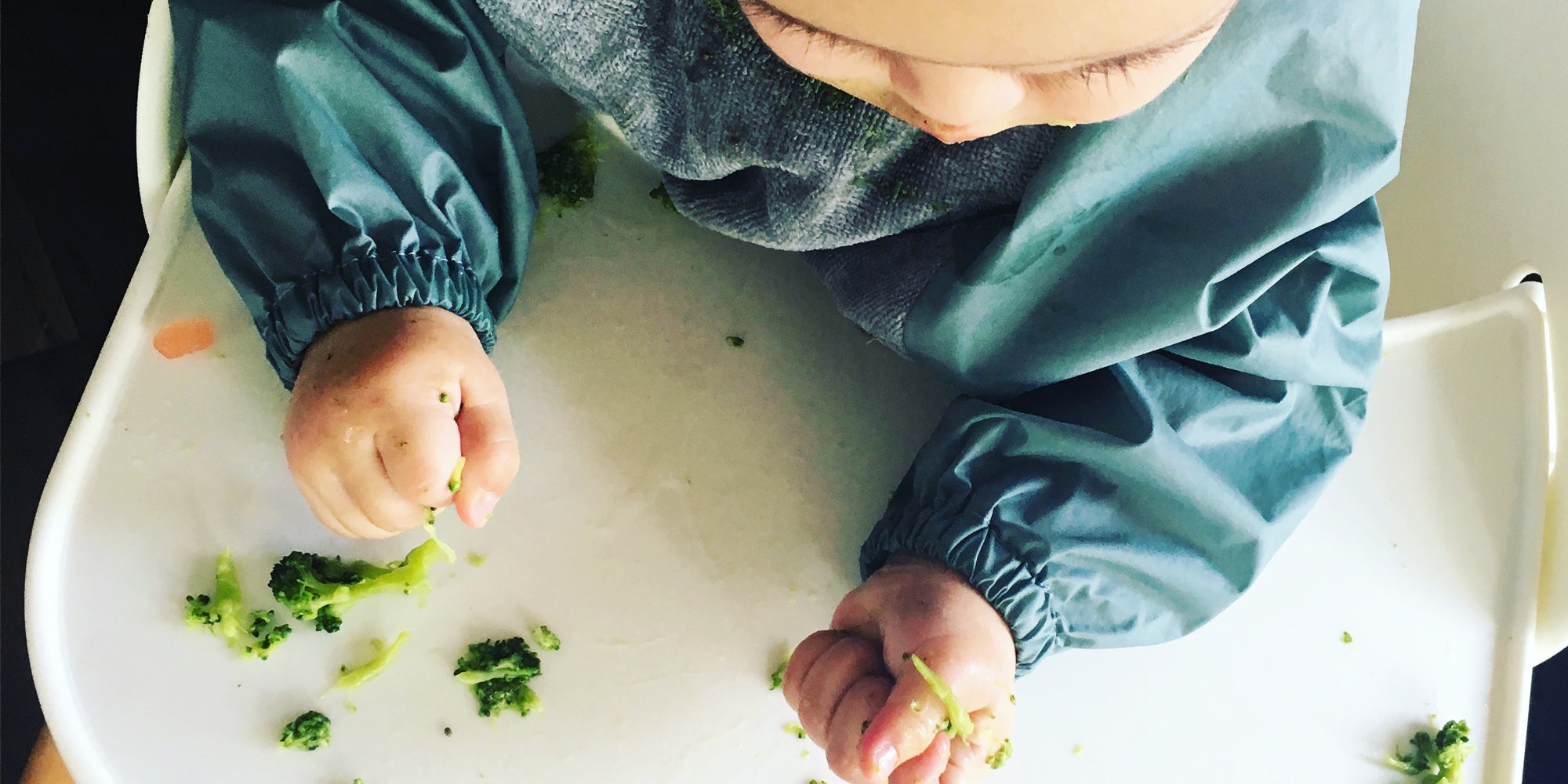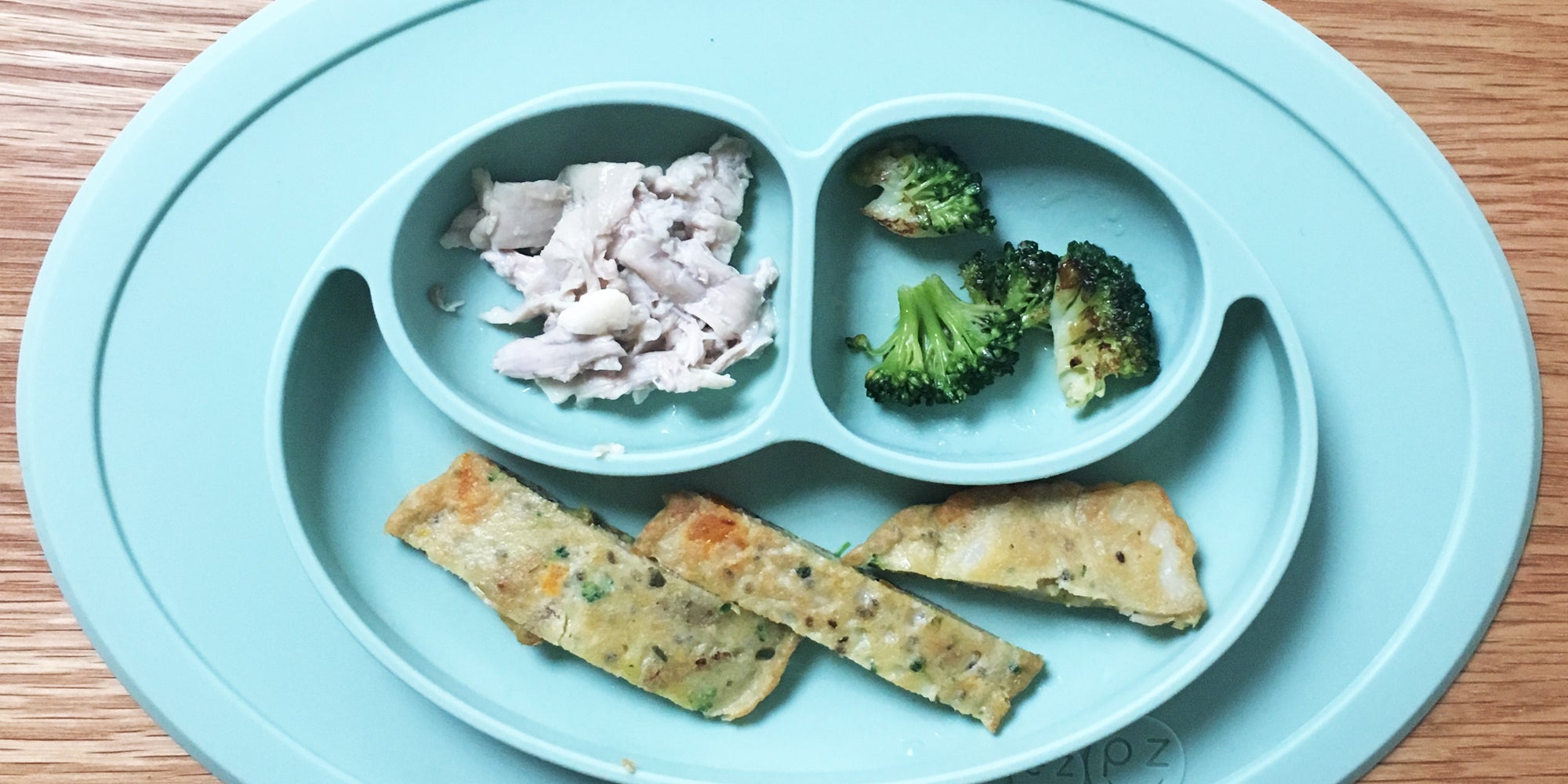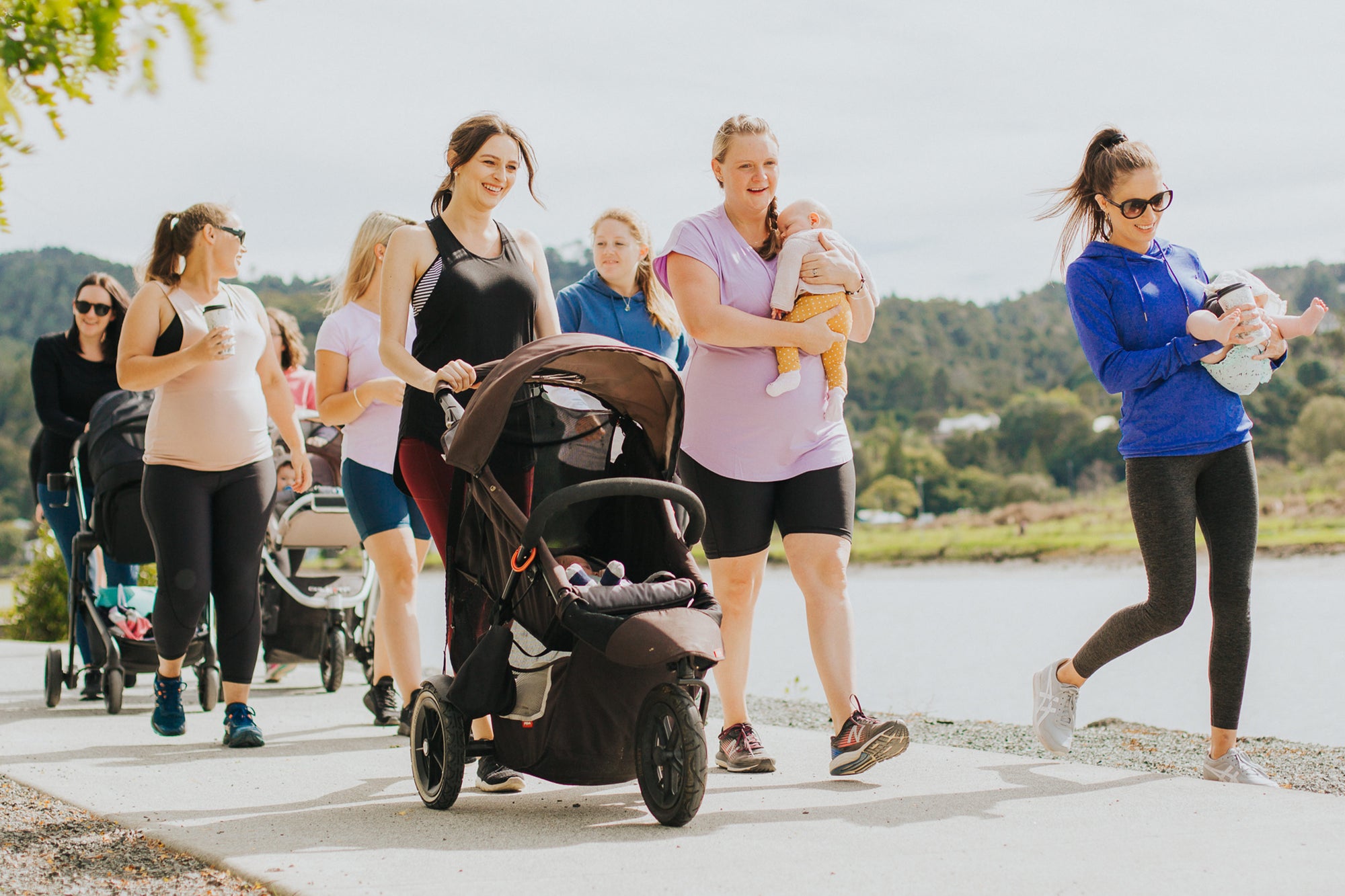Four years ago I was introduced to an awesome lady and there was something about her that made me think, ‘sheesh, this woman knows her stuff!’ Chantal Cuthers is a Registered Nutritionist who specializes in infant and women’s health. She works primarily with women who’re experiencing fertility issues, pregnant women and new mothers who want to give their babies the best start possible as it pertains to nutrition and solids.
Chantal and I became friends, and when my six month old started solids, I was a little overwhelmed with all the information I was receiving. So, I decided to reach out to Chantal for some advice, I am SO glad I did! Chantal made the whole baby solids process so easy, and not only gave me a simple structure to follow, but some super helpful tidbits and some cracker recipes to boot! She didn’t overcomplicate things. Her advice made solids FUN and I also had peace of mind knowing I was doing the right thing nutritionally for my boy too.
Rightly or wrongly, I am a little neurotic when it comes to good nutrition, so for someone a little highly strung around this topic like me, Chantal’s advice was just superb! With that in mind I decided it was imperative I used the Cadenshae platform to share her recommendations with you mamas!
Read below for some fantastic, concise and easy-to-follow advice and information in regards to starting your baby on solids. I hope all this saves you a battle - or three, as it certainly did for me! Good luck!

Chantal Cuthers - Introduction to Solids:
Starting solids can be a daunting task for many, but really, it should be an enjoyable and exciting experience for both you and your baby. Introducing food into your child’s life is an amazing milestone that leaves a wonderful space for messy play, funny faces, and pure joy derived from your baby discovering exciting new flavours!
When to start baby on solids?
Up until around six months old, your baby has been able to thrive on either breast milk, formula or both. However, at this time their growth requirements are too large and they need more than just milk to meet their protein, zinc and iron needs. Always watch your baby’s cues and only start when they show the following signs of being ready:
- They can hold their head up.
- They show an interest in food (staring at it, wanting it)!
- They don’t poke their tongue out to stop food entering their mouth. (This tongue protrusion reflex is the most important thing to look for. If they’re not poking their tongues out at the food - then they’re probably ready).
NB: The standard guidelines say to start solids no earlier than four months and no later than seven months. People often ask, can you give a baby solids at three months? The answer is no.
What’s the best texture for my baby’s food when starting out?
Mixing first foods with milk or formula is great for texture, plus it will help sweeten and introduce new tastes to your baby, with a familiar one. In the first few weeks, be sure that foods resemble a milk-like texture, not at all chunky or they may choke. Babies need time to develop their gag reflex and to adjust to a thicker consistency after drinking milk for six months.
How to start baby on solids?
Start with a pattern, not a scheduled time. Creating an eating pattern in your child’s day means that if you’re out, or running late, or early, you don’t have to stress about the clock. Your child will pick up the pattern rather than demand food at specific times.
Introduce new foods in the morning and on a weekday, so if reactions occur you can take them to a healthcare facility to get checked out. Recent studies suggest allergen foods (e.g. eggs, peanuts, wheat, soy, cow’s milk etc.) should be introduced in the first year of a baby’s life to lessen the chance of a reaction. This is up to you and your leading health care provider to decide on however.
Your pattern could look something like this:
Week 1 and 2:
Wake up – milk.
Second feed – milk.
Third feed – first solid.
Remaining feeds - milk.
Weeks 2, 3 and 4:
Wake up – milk.
Second feed – milk.
Third feed – new solid.
Fourth feed – milk.
Fifth feed – safe food (a solid you’ve already tried that your baby didn’t react to).
Remaining feeds – milk.
Weeks 5 and 6:
Wake up – milk.
Second feed – milk.
Third feed – new solid.
Fourth feed – milk.
Fifth feed – safe food.
Sixth feed - milk.
Seventh feed - safe food.
As you go on, you’ll start to form more of a ‘usual’ pattern for breakfast, lunch and dinner which your child will continue for the rest of their lives!
NB: Look at your child’s food consumption over a week, not day-to-day. Their growth requirements change daily depending on many things. Some days they’ll eat everything, and other days they won’t touch a thing. This is normal, do not force feed or get panicked unless it’s been longer than a week of low intake.
As a baby, I was fed lots of fruit and baby rice. Many of the products on the shelves are fruit based or contain baby rice - why shouldn’t I use these as a main source of nutrition?
At around six months old, babies NEED iron, zinc and proteins in their diet, which they can’t get enough of from milk or formula alone. So, the idea of blended apple - while tasty - isn’t hugely beneficial to your baby as it offers none of the required nutrients stated above. Pureed red meats (containing protein, zinc and iron) are at the top of the list for practitioners and experienced mothers alike. Avoiding baby rice, ‘normal’ rice and pasta to begin with is a good idea, unless of course you’re a vegetarian/vegan family. In that case baby rice can be mixed into other whole food ingredients such as avocado, pureed vegetables or banana for additional iron.

How much solids should my baby be eating and how often should I introduce new foods?
Start very small in size (one or two teaspoons) and listen/watch your child’s cues. Your baby only has a small stomach and requires small amounts more often rather than large meals. They have stronger satiety (fullness) cues than we do so they’ll tell you when they’ve had enough. Trust them. Just because you cooked a cup of food does not mean they need a cup of food.
Introduce one food at a time for 3-4 days to make sure there are no reactions. When a food is deemed a “safe food” then introduce another food in the same pattern. You will pick up foods that may cause issues much faster this way. Once a solid pattern has been established, you can start safe foods in the afternoon/night and only new foods in the morning. It’s a good idea to add a list of safe foods to your fridge in case anyone else is taking care of your child.
Don’t be scared of allergen foods, just be sure that if you have a family history of intolerance or severe allergic reactions, test your baby’s reactions in the presence of a health practitioner.
Baby-led weaning (BLW) or spoon feeding? I’ve heard I need to be strictly one or the other?
You don’t have to fit into a category of BLW or spoon feeding. Some days might be one or the other – that’s totally fine. Spooning food with your finger for your baby to suck off is also quite helpful, especially if you’re out or if your baby isn’t used to the spoon yet - but is still hungry. The most successful way to allow babies to explore food - without pressure - is a combination of both. This is based on my clinical and personal experience.
It’s a myth that combining BLW with spoon feeding will confuse your child and cause them to have issues with chewing and swallowing. BLW has been shown to have positive benefits for babies in terms of feeding skills; willingness to try more foods, and they also learn to listen to their own bodies, faster.
Should I be giving my baby dessert each night?
No - and I also suggest you avoid the “dessert” pouches at the supermarkets. Parents often complain their kids don’t eat bitter vegetables, and then hand them vanilla custard every day! Your child will innately want sweet food (since breastmilk and formula is sweet) so giving them lots of sweet food means that’s all they’ll go for. Your children don’t need dessert at this stage, so omitting it will save you dinner hassles later on.
NB: Suckie pouches can prevent proper oral development skills, and they also don’t teach the child about what they’re eating, or if they have had too much food. Use in emergencies only, but don’t ever rely on these as a go-to.
My child doesn’t like it, should I ever offer it again?
It can take on average 7-10 times for a baby to realise they like a food enough for it to be eaten regularly. In some cases the food will take 20 exposures. Most parents give up after three, don’t give up! If it helps, make a small chart or list to keep track of what you’ve tried and how many times. Once you’ve hit 10, then give up for a while. Never force feed, and try to be relaxed around meal times. Your baby will pick up on stress and will be less likely to try new foods. Eat new foods in front of them often so they’re exposed simply by seeing you eating too. The key is to be persistent, but patient.
My baby is getting fussy around meal times, what should I do?
Often it’s the stress around meal time or the pressure from parents. Check in with yourself first - are you relaxed, are you flexible, are you patient and kind? Or are you completely wound up and anxious?
Then do a quick check of your baby and their surroundings. Be careful not to use cold cloths, and metal spoons on your child’s face - they usually don’t like them. I find simply using warm cloths to wipe, and not scraping your baby’s face with a spoon can make quite a significant difference to a child’s desire to eat. Some babies don’t mind, but if yours is showing signs of fussy eating this is step one. Check their feet have something to rest on (rather than hang), and that their back is well supported is crucial. It’s easier for a baby to eat in a proper high chair than in a clip on where their feet have zero support.
Remember, your baby’s satiety cues are more in tune than yours are! If they’re not hungry, they won’t eat. Teething, sickness, tiredness etc. can all impact on a child’s appetite and you need to trust that your baby knows their body. It might be a few days, or a couple of weeks, but your child will eventually eat “more” again. Don’t push too hard, but keep offering food at mealtimes to establish a clear pattern.

Should I be making a different meal for them and us?
The faster your baby can eat what you’re eating, the faster and easier meal times will be. Ideally, you’ll blend and mash (depending on age) whatever you’re cooking for dinner. If you’re having a roast meal with veggies - then pull off some plain meat and veggies and blitz it together for the baby. Done! Buy a ‘Nutribullet’ (or equivalent) so you can throw food in, blend and wash without stress, mess, or much time. This is a little life saver for many busy parents. As your child develops, great meals to eat together and pick from are: tacos, spaghetti bolognese, chicken soup, pasta meals and simple mash, veggies and meat. Yum!
Constipation and poop:
How often should a baby poop after starting solids? One bowel movement a day would be the norm, however it's normal for babies to get constipated when trying new foods. Their digestive system is maturing and needs time to become used to food after months of milk. Be patient but persistent in all manners of eating. Here are some tips to help:
- Always offer small mouthfuls of water with each meal.
- Try adding pureed kiwifruit, prune and pear with meals as these are gut lubricating and helpful for constipation.
- Add coconut yoghurt or avocado to help lubricate the gut also.
- You can try ¼ tsp slippery elm in water mixed into food to help gentle gut healing and digestion.
- Try soft pancakes that allow your child to chew as chewing can help digestion.
- Kumara and banana can cause constipation in under ones so reduce or remove for a time.
- Work on bicycle movements with their legs and clockwise tummy rubs (not anticlockwise as this is the opposite to the movement of the large intestine).
What solids should babies start with?
Single mashed or pureed foods to start are fantastic, and can be mixed together to make mini-meals as your baby adds more food to their safe list. Don’t be afraid of pre-making some foods, but try to keep the quantity reasonable – you don’t need three months worth of pumpkin in the freezer!
- All vegetables – mashed pumpkin, carrot, kumara, broccoli, beetroot, chard/leafy greens etc.
- Animal ingredients – liver grated into vegetables above, small portion of cooked meat from your dinner pureed with a vegetable above, white fish, red meats, egg yolk moving onto whole egg, and plain Greek yoghurt (which I find an excellent option to cool foods down quickly when you have a hungry baby).
- All fruit – fantastic for gut health so don’t be afraid of natural sugar in fruit, your baby needs it. Banana, berries, stewed apple, pear or stone fruit, avocado.
Recipes to graduate to as your baby gains variety:
Chia pudding
To start with, just mix chia seeds and water with some pureed fruit. Then, slowly integrate more options like hemp hearts, probiotics, a green smoothie base mixed with chia seeds. You can serve a small bowl for the baby, and then add some freshly cut fruit for you and enjoy together!
I like to make a green smoothie (greens, banana, almond milk) and offer a little from a cup to practice drinking skills, and then mix chia and hemp hearts into it to thicken in the fridge and use for lunches over the coming days.
Banana pancakes
Buckwheat or whole meal flour, mashed banana, egg yolk (or whole egg if tested) to make a batter and add almond or dairy milk to smooth if needed. Soft cook and cut into long strips to practice grabbing and chewing with gums. Great for BLW. Serve some for yourself and enjoy toppings of your choice while the baby learns to eat theirs.
You can also blend chia, greens, almond milk, buckwheat flour, egg yolk/egg and banana to make green pancakes. Great for introducing variety but maintaining a familiar texture and taste.
Veggie fritters
You can upgrade slowly to vegetable fritters by replacing the banana and using a savoury base with sliced or pureed greens, leftover veggie mash, canned salmon etc. Something the whole family can enjoy together.
Thank you so much Chantal for allowing me to share the advice you gave me...it saved me so many problems and now my wee boys eat like champs! Don’t get me wrong, broccoli, spinach and kale are still pretty hard to get across the line, but that’s nothing a good grater and big pile of mince or mash can’t fix! ;)
So there you have it ladies - there’s a fair bit to take in, but read it a few times, and it will all make perfect sense soon enough.
You’ve totally got this!
Written by Ellen Chisholm and Chantal Cuthers.



